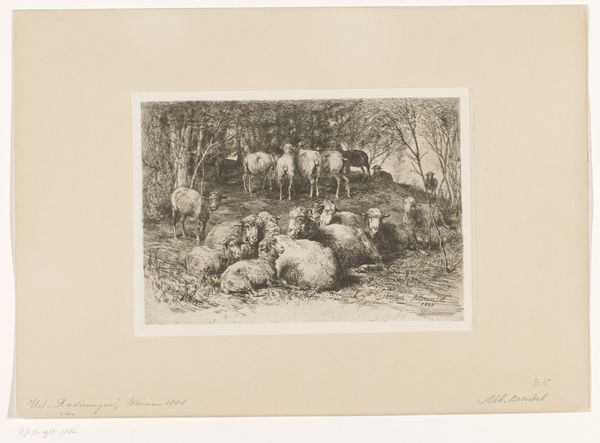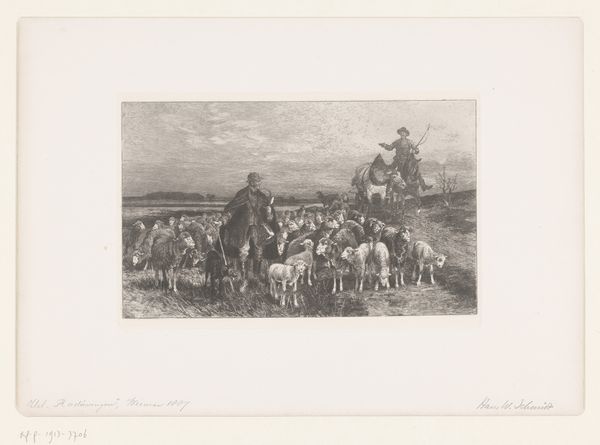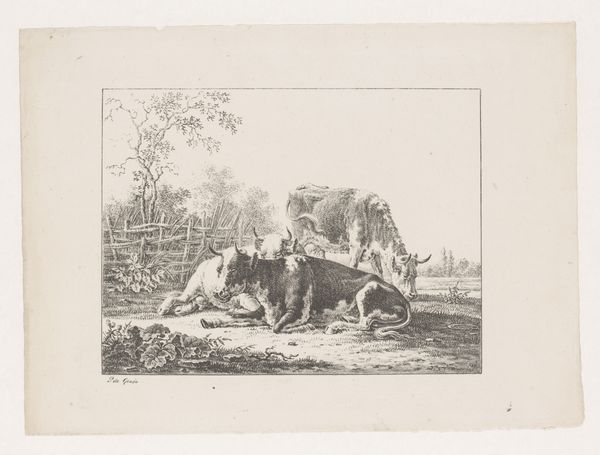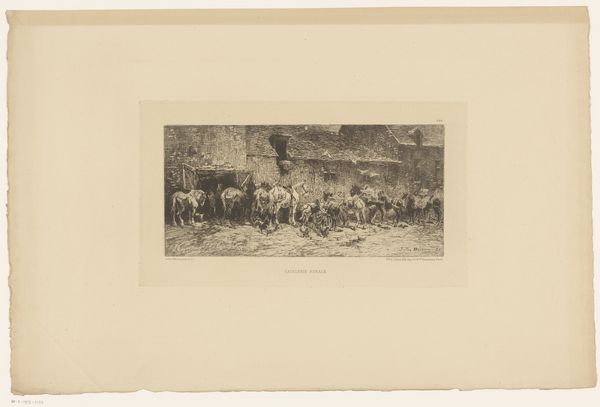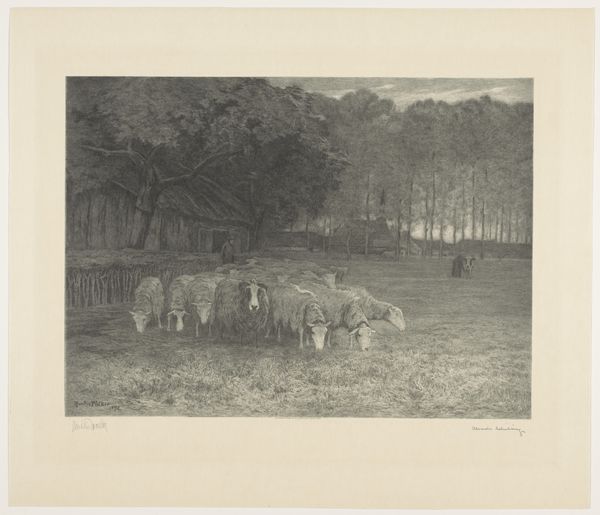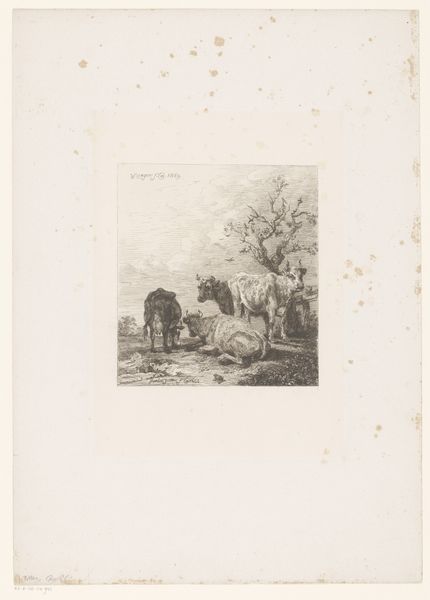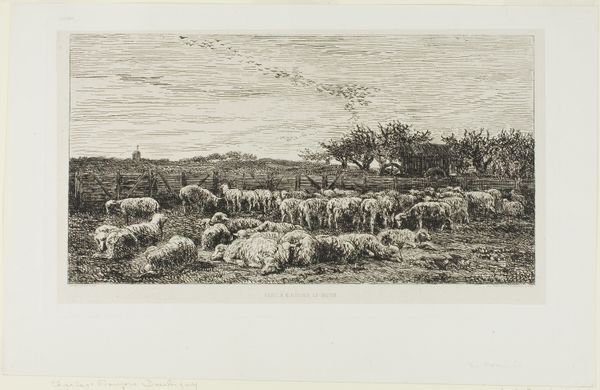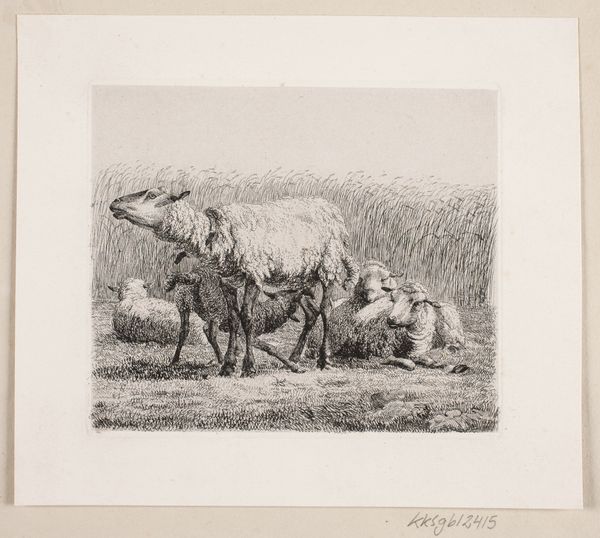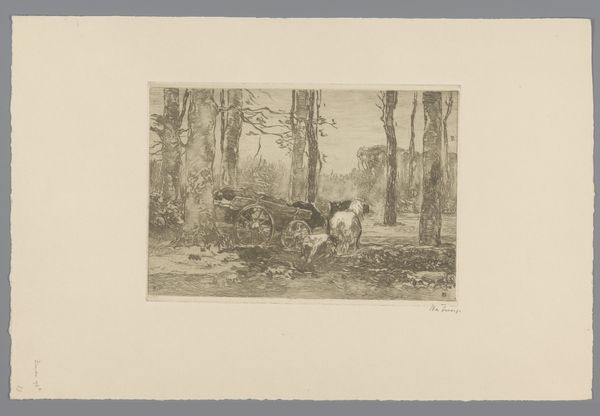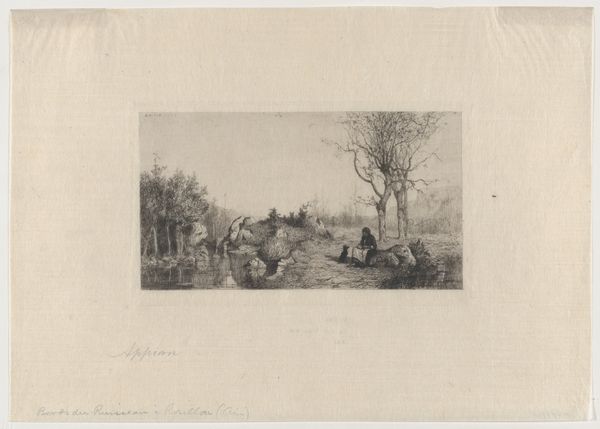
drawing, print, etching, paper
#
drawing
# print
#
etching
#
landscape
#
paper
#
genre-painting
#
realism
Dimensions: 183 × 283 mm (image); 200 × 298 mm (plate); 333 × 448 mm (sheet)
Copyright: Public Domain
Charles Jacque created this print called "Flock of Sheep at the Edge of a Wood" using etching, a printmaking technique, sometime in the mid-19th century. Here, the image of the shepherd and his flock can be read as a commentary on the changing social landscape of 19th-century France, where rural life was increasingly idealized amid the growth of cities and industry. The image participates in a nostalgic view of the countryside, a theme frequently seen in French art of this period. Cultural references to pastoral life, like the shepherd, invoke ideas of simplicity, harmony, and a connection to nature, reflecting a longing for a world untouched by the complexities of modern society. Understanding this artwork requires us to delve into its social and cultural context. By researching the art market, exhibition records, and the writings of contemporary critics, we can gain deeper insights into the meanings and values that Jacque's image held for its original audience. Art history reminds us that the meaning of art is not fixed but evolves in response to changing social conditions.
Comments
No comments
Be the first to comment and join the conversation on the ultimate creative platform.

